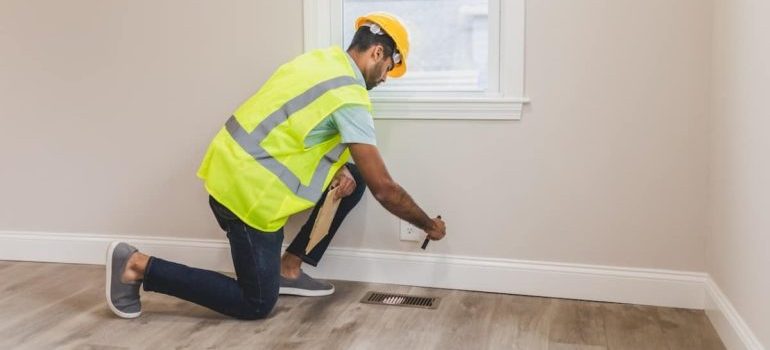What to look for when buying a house in Coral Gables
House hunting in Coral Gables feels like touring a postcard: Spanish roofs, palm-lined streets, and lawns that look camera-ready. But behind every perfect archway, there’s fine print worth reading. The market may sparkle, yet beauty alone doesn’t pay for insurance or handle flood zones. Before you fall for that terracotta charm, take a closer look at our Pro Movers Miami guide on what really matters when buying a house in Coral Gables.
1. Understand the current market before making an offer
The Coral Gables market has remained strong through 2025. According to Zillow, the median home value sits around $1.47 million, showing only a slight year-over-year dip of about 2%. That signals stability despite Florida’s shifting real estate scene. Homes typically stay on the market for 55 to 60 days, and desirable neighborhoods still attract multiple offers.
For buyers, this means preparation is everything. Review recent comparable sales in your target area, speak with your lender early, and keep a clear budget range. Having your financing pre-approved allows you to move fast when you find the right property. Coordinating with local movers in Coral Gables, Florida, ahead of time can also help you plan closing and move-in dates efficiently once the deal is finalized.

2. Research the neighborhood and lifestyle fit
Coral Gables offers distinct pockets of personality. You’ll find quiet, historic charm in the Granada section, elegant estate living along Old Cutler Road, and convenient urban access near Downtown Gables. Each area differs in architecture, school proximity, and property size.
Before committing, visit your top neighborhoods at different times of day. Morning traffic, evening noise, and weekend parking tell you more than photos ever could. The city is prized for safety, tree-shaded streets, and strong community standards, but the right fit depends on your daily rhythm.
Think about how you live: Do you prefer walkable blocks or privacy? Close access to the airport or the University of Miami? Choosing based on lifestyle makes a lasting difference in comfort.
3. Inspect property condition and architectural integrity
Coral Gables homes are known for the Mediterranean Revival style, but age and humidity can test even the sturdiest structure. Many listings feature original features like arched windows, clay roofs, and stone floors—but those details often come with upkeep.
Hire a certified home inspector who understands South Florida’s construction norms. Look closely at roof condition, plumbing, air conditioning systems, and termite protection. Ask for records of upgrades such as hurricane-impact windows, new wiring, or updated insulation.
If you buy an older home that needs updates, factor renovation time into your move-in plan. Some buyers temporarily keep furniture or belongings during remodeling with local white glove storage to protect valuables from dust or damage. Planning these logistics early saves time later.
4. Evaluate flood zones and hurricane protection
Coral Gables’ beauty comes with coastal risk. Check FEMA flood zone maps before making an offer—especially if the home sits near canals or low-lying areas. Flood zones directly affect insurance costs, and premiums in South Florida can add thousands annually.

Also, inspect hurricane-readiness features. Look for impact-resistant glass, reinforced roofs, and secure garage doors. Proper drainage and elevation also reduce long-term risk. Even if a property looks flawless, small details like gutter placement or landscaping slope can influence how it handles heavy rain.
5. Review HOA rules and city regulations
Coral Gables maintains its signature beauty through strict local Miami-Dade codes. Many neighborhoods have homeowners’ associations (HOAs) or architectural review boards that set appearance standards. Before purchasing, review those documents carefully.
Some associations control paint colors, fence styles, or even driveway materials. Others set limits on exterior renovations or tree removal. While these rules preserve curb appeal, they may also restrict personalization. Understanding them early prevents frustration after move-in.
If you’re moving from out of town, ask your local moving companies in Miami-Dade about access challenges, like Coral Gables’ narrow streets and large trees can make deliveries tricky. Planning the route avoids delays and ensures furniture arrives safely.
6. Budget beyond buying a house in Coral Gables
Home prices in Coral Gables reflect its prestige, but ownership costs stretch further. Here’s a quick checklist to keep your budget realistic:
- Property taxes: Expect above-average rates due to high property values.
- Insurance: Factor in hurricane and flood coverage; both are essential in Miami-Dade County.
- Maintenance: Mediterranean homes require regular roof inspections, pest control, and landscaping.
- Utilities: Air conditioning costs rise fast during humid summers.
- Closing and moving costs: Include legal fees, inspection costs, and professional moving services.
Coral Gables real estate tends to appreciate steadily, but it’s wise to protect your investment with preventive maintenance and realistic planning. Even a well-priced home can strain your budget without factoring in these long-term expenses.

7. Consider commute, schools, and amenities
Coral Gables sits just southwest of Miami, making commutes simple yet varied. Major routes like US-1 and Le Jeune Road connect residents to downtown in under 20 minutes on a good traffic day. Proximity to Miami International Airport is another perk for frequent travelers.
The city recently introduced new traffic calming criteria for residential streets, focusing on pedestrian safety and reducing speeding near schools and parks, which makes neighborhood living safer and more family-friendly.
Families appreciate top-rated schools such as Coral Gables Preparatory Academy and Gulliver Preparatory, while professionals enjoy access to parks, golf courses, and shopping areas like Miracle Mile.
Smart preparation leads to smarter ownership
Buying a house in Coral Gables is a long-term commitment wrapped in warm stucco and palm fronds. But success depends on preparation, not luck. Know the market, study each neighborhood, inspect thoroughly, and respect local regulations before making your offer.
When the time comes to relocate, plan logistics early. Coral Gables’ narrow drives and shaded streets make timing important, and professional movers familiar with the area simplify that process. Your perfect Coral Gables home is out there. Stable, beautiful, and ready for new memories.
